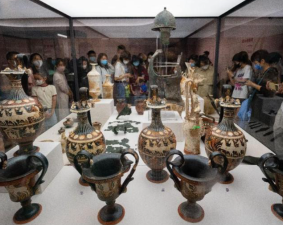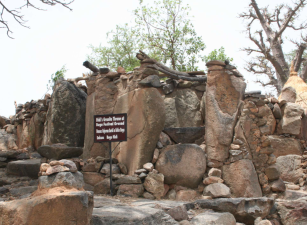Why Preserving Civilization’s Heritage Is Crucial
World Cultural Heritage refers to sites, buildings, and monuments designated by UNESCO as possessing cultural, historical, artistic, and scientific value, and of special significance to humanity as a whole. Its significance lies in preserving and inheriting humanity's shared cultural heritage, while also serving as an important means of promoting global cultural exchange and understanding. Measures to protect World Cultural Heritage can be achieved through maintaining its pristine condition, through publicity and education, and through legal and regulatory frameworks.
Firstly, the significance of World Cultural Heritage lies in preserving and inheriting humanity's shared cultural heritage. This heritage, including buildings, historical sites, and works of art, represents important stages in human history and the achievements of civilization. Preserving this heritage allows future generations to understand and learn about the origins and evolution of their own cultures, fostering a stronger sense of identity. Furthermore, protecting World Cultural Heritage contributes to the preservation of the shared memory of human civilization and prevents the loss or oblivion of human history and culture.

Secondly, preserving World Cultural Heritage is an important means of promoting global cultural exchange and understanding. The cultural heritage of every country and region in the world possesses unique value and charm. Preserving and promoting World Cultural Heritage can encourage more people to understand and appreciate other cultures, fostering exchange and integration between cultures. When people draw inspiration and enlightenment from the cultural heritage of others, they can also promote innovation and development in their own cultures. The protection of world cultural heritage can enhance dialogue and understanding between cultures and promote global peace and cooperation.
However, world cultural heritage requires effective protection. First, its pristine state must be maintained. World cultural heritage sites often have a long history and may face various threats, such as natural disasters and human destruction. Therefore, measures must be taken to restore and protect them and ensure their permanent preservation. Second, publicity and education must be strengthened. Through cultural heritage promotion activities, public awareness and appreciation of world cultural heritage can be raised, inspiring a sense of responsibility and initiative in cultural protection. Furthermore, professional training should be strengthened, and relevant research and archaeological work should be conducted to safeguard the integrity and authenticity of world cultural heritage.

Finally, laws and regulations are also important means of protecting world cultural heritage. Each country and region should establish a comprehensive legal system and management mechanism to strengthen the protection and supervision of cultural heritage. Furthermore, the international community must strengthen cooperation and jointly safeguard the safety and integrity of world cultural heritage through international conventions and agreements.
In short, the significance of world cultural heritage lies in protecting and passing on humanity's shared cultural heritage and promoting global cultural exchange and understanding. Protecting world cultural heritage requires a comprehensive approach, including maintaining its pristine state, strengthening publicity and education, and establishing laws and regulations. Only by protecting the world's cultural heritage can future generations inherit and feel the richness and diversity of human history and culture, and jointly promote the progress and development of human civilization.






